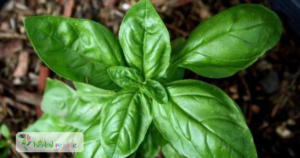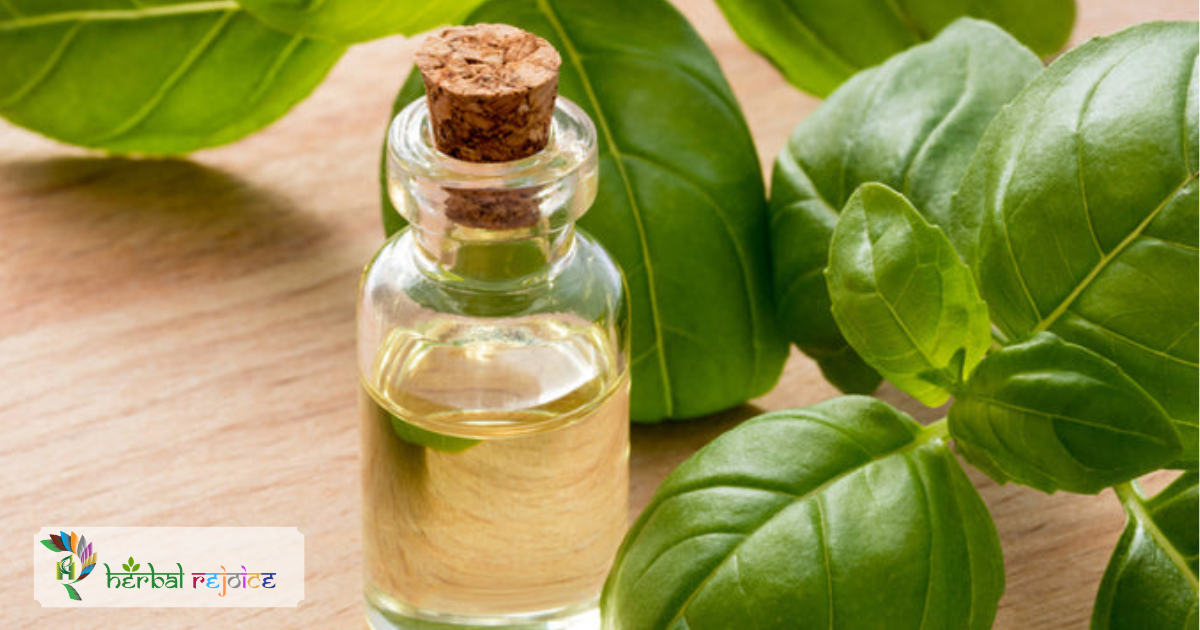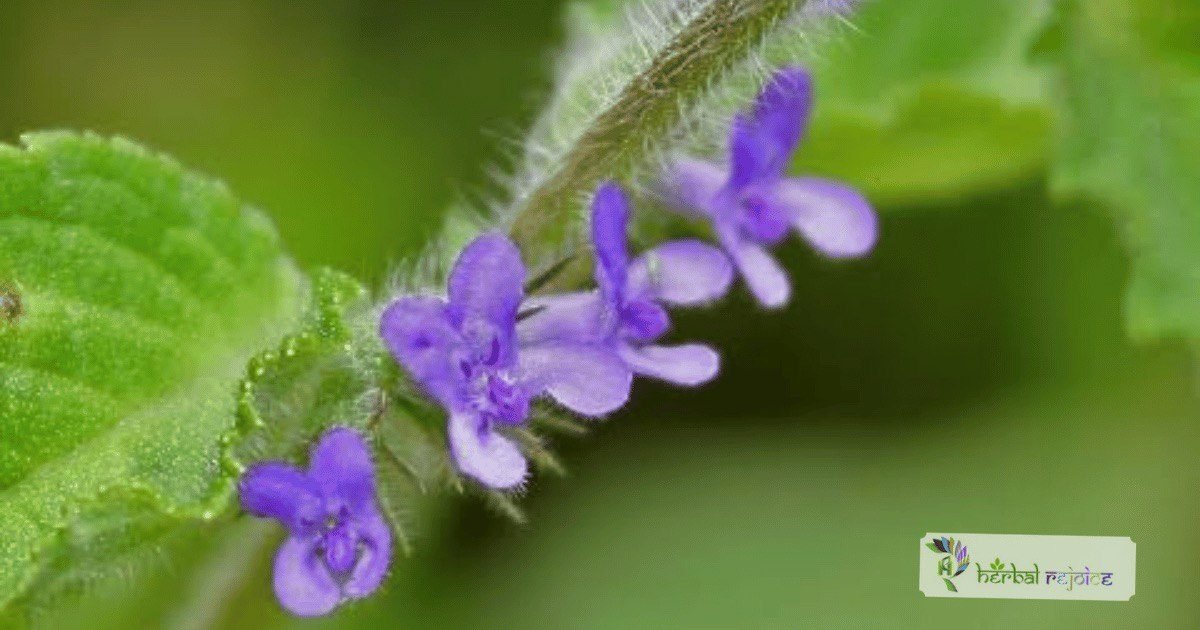Introduction
Sweet Basil, also known as Ocimum basilicum Linn., is a popular herb with various names and uses across different cultures. It belongs to the Labiatae family, also known as Lamiaceae.
It is considered a valuable herb with stimulant, carminative, antispasmodic, diuretic, and demulcent properties.
This article will explore the uses and benefits of Sweet Basil in different traditional systems of medicine and highlight its potential medicinal properties.
Sweet Basil – Guide To Insect Bites

Names and Habitat Of Sweet Basil
Sweet Basil is known by its English name, as well as its Scientific Name, Ocimum basilicum Linn.
It is also synonymously referred to as O. caryophyllatum Roxb., O. minimum Linn., and O. pilosum Willd.
It is commonly found in the lower hills of Punjab, but is cultivated throughout India.
Traditional Uses Of Sweet Basil in Ayurveda
In Ayurveda, Sweet Basil is known by various names such as Barbari, Tuvari, Tungi, Kharpushpa, Ajgandhikaa, and Baabui Tulasi.
It is considered a valuable herb with stimulant, carminative, antispasmodic, diuretic, and demulcent properties.
The flower is used to stimulate various bodily functions, while the seed is used as an antidysenteric.
The plant’s juice has antibacterial properties and the essential oil derived from it exhibits antibacterial, antifungal, and insecticidal effects.
Uses Of Sweet Basil in Unani Medicine
In Unani medicine, Sweet Basil is known as Faranjmishk and is sometimes equated with Dracocephalum moldavica Linn.
It is also referred to as Raihan, which is sometimes equated with O. sanctum. In Unani medicine, it is used as a substitute for Phanijjaka.
However, it is important to note that Sweet Basil is included among the unapproved herbs by the German Commission E.
Uses in Siddha/Tamil and Folk Medicine
In Siddha/Tamil medicine, Sweet Basil is known as Tiruneetruppachhilai. In folk medicine, it is commonly referred to as Bana-Tulasi.
In Maharashtra, it is also known as Sabzaa. In both Siddha/Tamil and folk medicine, Sweet Basil is used for its medicinal properties, including relief from insect bites and stings.
Phytochemistry and Medicinal Properties Of Sweet Basil
Sweet Basil contains an essential oil with its major constituents being linalool (up to 55%), methyl ether (estragole) up to 70%, and eugenol.
It also contains caffeic acid derivatives and flavonoids. Thymol and xanthomicrol have been isolated from the leaves.
Other compounds isolated from the leaves include aesculetin, p-coumaric acid, eriodictyol, its 7-glucoside, and vicenin-2.
The essential oil derived from Sweet Basil has been shown to inhibit the growth of various fungi, including mycotoxin-producing strains of Aspergillus flavus and A. parasiticus.
Precautions and Dosage Of Sweet Basil
Due to the high estragole content in the essential oil of Sweet Basil, it is not recommended for use during pregnancy, nursing, or for prolonged periods of time.
In homoeopathy, fresh mature leaves of Sweet Basil are used to treat haematuria, inflammation, and congestion of the kidneys.
The recommended dosage for Sweet Basil varies depending on the part of the plant used.
A decoction of the whole plant is typically consumed at a dose of 50-100 ml, while the powdered seed is taken at a dose of 1-3 grams.
Conclusion
Sweet Basil (Ocimum basilicum Linn.) is a versatile herb with a wide range of uses in traditional medicine.
It is valued for its stimulant, carminative, antispasmodic, diuretic, and antibacterial properties.
However, it is crucial to exercise caution and follow recommended dosages, especially due to its estragole content.
Sweet Basil continues to be an important herb in various traditional systems of medicine, and its potential health benefits make it worth exploring further.
Frequently Asked Questions(FAQs)
What is Sweet Basil?
Sweet Basil, scientifically known as Ocimum basilicum Linn., is a popular herb with various uses and benefits across different cultures.
What is the English name for Sweet Basil?
The English name for Sweet Basil is, well, Sweet Basil.
What are the traditional uses of Sweet Basil in Ayurveda?
In Ayurveda, Sweet Basil is used as a stimulant, carminative, antispasmodic, diuretic, and demulcent. The flower stimulates bodily functions, while the seed is used as an antidysenteric. The plant’s juice has antibacterial properties, and the essential oil derived from it exhibits antibacterial, antifungal, and insecticidal effects.
What is Sweet Basil known as in Unani medicine?
In Unani medicine, Sweet Basil is known as Faranjmishk and is sometimes equated with Dracocephalum moldavica Linn. It is also referred to as Raihan, which is sometimes equated with O. sanctum.
What are some traditional uses of Sweet Basil in Siddha/Tamil and folk medicine?
In Siddha/Tamil medicine, Sweet Basil is known as Tiruneetruppachhilai. In folk medicine, it is commonly referred to as Bana-Tulasi. In both Siddha/Tamil and folk medicine, Sweet Basil is used for relief from insect bites and stings.
What are the major constituents of Sweet Basil’s essential oil?
The major constituents of Sweet Basil’s essential oil are linalool (up to 55%), methyl ether (estragole) up to 70%, and eugenol.
What other compounds are found in Sweet Basil?
Sweet Basil also contains caffeic acid derivatives, flavonoids, thymol, xanthomicrol, aesculetin, p-coumaric acid, eriodictyol, its 7-glucoside, and vicenin-2.
What fungi can the essential oil derived from Sweet Basil inhibit?
The essential oil derived from Sweet Basil has been shown to inhibit the growth of various fungi, including mycotoxin-producing strains of Aspergillus flavus and A. parasiticus.
Are there any precautions one should take when using Sweet Basil?
Due to the high estragole content in the essential oil of Sweet Basil, it is not recommended for use during pregnancy, nursing, or for prolonged periods of time.
What are the potential medicinal properties of Sweet Basil?
Sweet Basil has potential stimulant, carminative, antispasmodic, diuretic, and antibacterial properties.
What is the recommended dosage for Sweet Basil?
The recommended dosage for Sweet Basil varies depending on the part of the plant used. A decoction of the whole plant is typically consumed at a dose of 50-100 ml, while the powdered seed is taken at a dose of 1-3 grams.
Is Sweet Basil safe to use during pregnancy?
Due to the high estragole content in the essential oil of Sweet Basil, it is not recommended for use during pregnancy.
Can Sweet Basil be used for kidney-related issues?
In homeopathy, fresh mature leaves of Sweet Basil are used to treat haematuria, inflammation, and congestion of the kidneys.
Does Sweet Basil have any anti-inflammatory properties?
Some traditional medicinal systems consider Sweet Basil to have anti-inflammatory properties.
Can Sweet Basil be used for insect bites and stings?
Yes, Sweet Basil has been traditionally used in Siddha/Tamil and folk medicine for relief from insect bites and stings.
What is the significance of Sweet Basil’s essential oil being antibacterial and antifungal?
The antibacterial and antifungal properties of Sweet Basil’s essential oil make it potentially useful in combating bacterial and fungal infections.
Is Sweet Basil a substitute for any other herb in Unani medicine?
In Unani medicine, Sweet Basil is used as a substitute for Phanijjaka.
Can Sweet Basil be used as an antidysenteric?
Yes, in Ayurvedic medicine, the seed of Sweet Basil is used as an antidysenteric.
Apart from its medicinal properties, what other benefits does Sweet Basil have?
Sweet Basil is commonly used as a culinary herb due to its distinct flavor and aroma.





